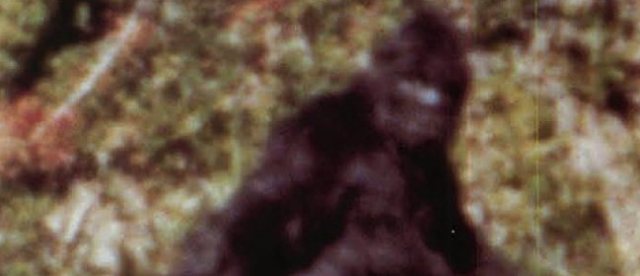 Is Cain Bigfoot? This is something I remember hearing as a kid in California long ago, and thinking, “This is a thing? Who comes up with this? Where did someone even think to ask that?” Then I read The Miracle of Forgiveness. I am pretty sure this is where it comes from:
Is Cain Bigfoot? This is something I remember hearing as a kid in California long ago, and thinking, “This is a thing? Who comes up with this? Where did someone even think to ask that?” Then I read The Miracle of Forgiveness. I am pretty sure this is where it comes from:
The instance of the first murder is instructive. Though thoroughly taught the gospel by his parents, Cain “loved Satan more than God.” He became rebellious, “carnal, sensual, and devilish.” Cain was to become the father of Satan’s lies and to be called perdition. His culminating sin was the murder of his brother Abel, which he did by secret covenant with Satan and to gain Abel’s possessions. As a punishment the Lord consigned the wicked Cain to be a fugitive and a vagabond and placed a mark upon him which would reveal his identity.
On the sad character Cain, an interesting story comes to us from Lycurgus A. Wilson’s book on the life of David W. Patten. From the book I quote an extract from a letter by Abraham O. Smoot giving his recollection of David Patten’s account of meeting “a very remarkable person who had represented himself as being Cain.”
As I was riding along the road on my mule I suddenly noticed a very strange personage walking beside me—. His head was about even with my shoulders as I sat in my saddle. He wore no clothing, but was covered with hair. His skin was very dark. I asked him where he dwelt and he replied that he had no home, that he was a wanderer in the earth and traveled to and fro. He said he was a very miserable creature, that he had earnestly sought death during his sojourn upon the earth, but that he could not die, and his mission was to destroy the souls of men. About the time he expressed himself thus, I rebuked him in the name of the Lord Jesus Christ and by virtue of the Holy Priesthood, and commanded him to go hence, and he immediately departed out of my sight.[1]Spencer W. Kimball, The Miracle of Forgiveness, Salt Lake City: Bookcraft, 1969.
When it comes to historical accounts like these, it is important to understand both the provenance and the complexities of second and third hand accounts. It is good to note that Elder Kimball[2]This book was published in 1969, 4 years before he became president of the Church. wrote of an account of David Patten that was found second hand in a letter written by Abraham O. Smoot. The man in question said he was Cain. Just because someone said he is Cain, does not mean that he is. I like to think of this story as one of the great Mormon urban legends that I have come across as a seminary teacher in the years that I have taught (1993-2017).
Just think about it- very few men have been translated- and these individuals were extremely righteous. All those translated before the coming of Christ are now resurrected (D&C 133:53-55), and the flood destroyed “every living substance” (Genesis 7:4-6, 21-23)- the author of this story is very clear that all living flesh with the “breath of life” was destroyed in the flood. The text of Genesis must also be examined with a careful lens to discern the cultural context of those that wrote these stories, something that I will write about in the future.[3]See: What is the Documentary Hypothesis? I have found no other commentary on Cain living beyond his “normal” lifespan other than the above mentioned third-hand account in The Miracle of Forgiveness. I am open to more information- if you find anything, please let me know.
References
| ↑1 | Spencer W. Kimball, The Miracle of Forgiveness, Salt Lake City: Bookcraft, 1969. |
|---|---|
| ↑2 | This book was published in 1969, 4 years before he became president of the Church. |
| ↑3 | See: What is the Documentary Hypothesis? |
